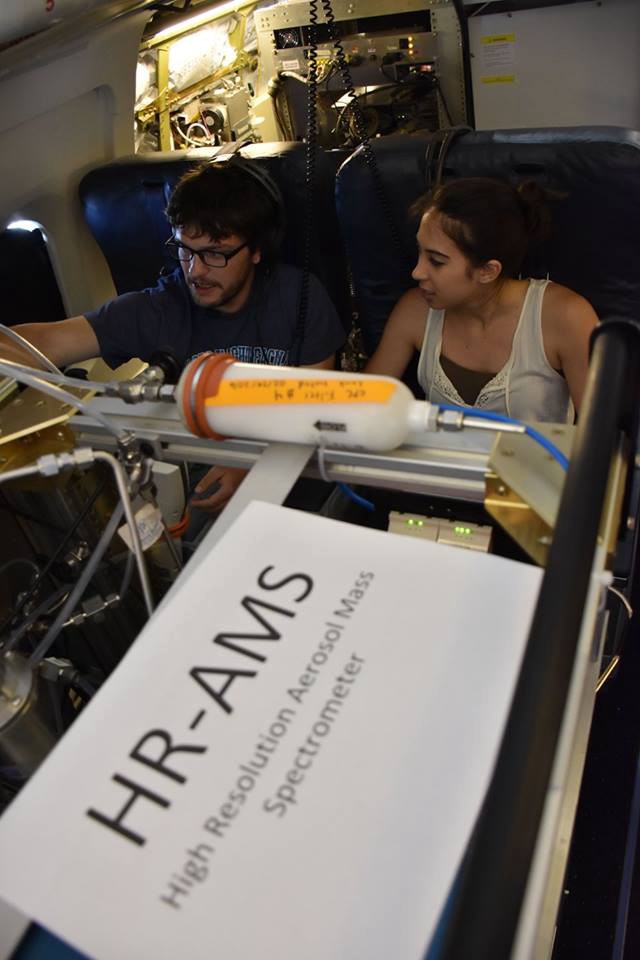So, prior to finishing up KORUS-AQ and getting a break before my next campaign (that will start at the end of July and I will be blogging about that as well), the scientist of KORUS-AQ had one more project to do — SARP.
SARP stands for the Student Airborne Research Program, and it is a summer program ran by NASA for undergraduate students to experience airborne science and to create their own science projects. I was a participant the second year of the program (2010).
Since I had participated in the program, I thought it was awesome to be on the other side and introducing the students to airborne sciences.
During this time, the students experienced one of two flights — one over Los Angeles and one through the Central Valley of California. The flight over Los Angeles was interesting since at this time, the Sherpa fire was impacting the chemistry over Los Angeles. This will provide the students an opportunity to investigate impacts of wildfires on air quality as well as the interaction of wildfires with human emissions.

Haze over Los Angeles caused by the Sherpa fire. Image courtesy of Jane Peterson.

One of the SARP students learning about my instrument during the flight. Image courtesy of Jane Peterson.
The second flight was focused on the Central Valley because it has some of the worse air quality in the United States. By sampling the Central Valley, the students will have an opportunity to compare emissions between the valley and Los Angeles as well as compare the chemistry that is causing the poor air quality in both regions.

Teaching another SARP student about my instrument during the second flight. Image courtesy of Jane Peterson.
Besides students focusing on air quality (atmospheric chemistry) questions, other questions that students can focus on includes using remote sensing observations over ocean or land to investigate ocean currents, algae blooms, water quality, water cycle, drought, plant mapping, and et cetera.
I will be posting again towards the end of July and early August about the second project I will be participating in.
